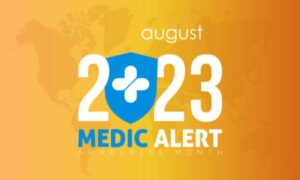The Medicare program, established in 1965, is a federal health insurance program primarily serving individuals aged 65 and older, as well as certain younger people with disabilities. It is a critical component of the U.S. healthcare system, providing essential medical coverage to millions of Americans. Understanding the impact of population changes on Medicare is of paramount importance, as demographic shifts significantly influence the program’s sustainability, financial health, and ability to deliver quality care. With the aging of the baby boomer generation and increasing life expectancies, it is crucial to examine how these changes affect Medicare to ensure its continued effectiveness and availability for future generations.
Demographic Shifts
The Medicare program is profoundly impact by demographic changes, primarily the significant increase in the ageing population. This growth is largely driven by the baby boomer generation, individuals born between 1946 and 1964, who are now reaching retirement age in large numbers. As a result, the number of Medicare beneficiaries has surged, placing additional demands on the program. Moreover, advancements in healthcare and improved living standards have led to longer life expectancies, further expanding the duration for which individuals rely on Medicare services. This combination of more beneficiaries and extended lifespans has created a critical need for the Medicare program to adapt to these evolving demographic realities.
Financial Strain on Medicare
The influx of new beneficiaries due to demographic shifts has placed a considerable financial strain on the Medicare program. With the growing number of enrollees, particularly from the aging baby boomer generation, the overall expenditure on healthcare has risen significantly. Aging populations tend to have higher healthcare costs, driven by the increased prevalence of chronic conditions and the need for more frequent medical interventions. This scenario exacerbates funding challenges, making it increasingly difficult to maintain the financial sustainability of the Medicare trust fund. As expenses continue to outpace revenue, the program faces a pressing need for strategic reforms to ensure its long-term viability and capacity to serve future beneficiaries.
Changes in Healthcare Needs
As the population ages, there is a significant increase in chronic conditions, including diabetes, heart disease, and arthritis, which significantly increase health care costs. Management and treatment of these persistent conditions require ongoing clinical attention, medications, and specialized care, which contributes to higher costs for Medicare. Additionally, there is more demand for long-term care services, including nursing homes, assisted living and home fitness care, as more people live longer and need guides for daily exercise. In response to these developments, there was a strategic shift toward preventive care and proactive management of chronic illness. This approach aims to improve health outcomes and reduce general charges by halting disease progression and reducing the need for intensive scientific interventions. The growing health care needs of an aging population require adjustments within the Medicare program to properly address those demanding conditions and provide specific comprehensive, cost effective care.
Policy Responses and Reforms
In response to financial pressures and health care needs, numerous legislative measures have been taken to address funding shortfalls and ensure the sustainability of the Medicare program. These measures include adjustments to payroll taxes, changes to the benefit structure, and actions aimed at reducing fraud and abuse within the machine. Efforts to manage healthcare tariffs have also been an important focus, aiming to reduce the growth of clinical charges through charge reforms, promotion of time-honored pills and implementation of price-sharing systems. Additionally, care transportation improvements were introduced to improve boom efficiency and patient impact.
Programs such as Medicare Advantage and Accountable Care Organizations (ACOs) have evolved to provide more integrated and fee-effective care. Medicare Advantage offers beneficiaries traditional Medicare, with regular extra blessings and lower out-of-pocket costs, while ACOs encourage healthcare vendors to collaborate on cost management as well as providing terrific care. These coverage responses and reforms are essential to adapting the Medicare program to the evolving landscape and ensuring its ability to meet the needs of current and future beneficiaries.
Impact on Medicare Services and Benefits
Due to demographic and economic pressures, Medicare coverage and benefits have undergone significant adjustments. These changes include changes to covered services, changes to eligibility criteria, and the introduction of new benefit options designed to meet the needs of different beneficiaries, as well as changes in funding to providers aimed at controlling costs and promoting quality care. These quantitative changes affect how providers allocate resources and deliver services and may affect willingness to participate in the Medicare program. Despite these challenges, great efforts have been made to maintain and improve the quality of care. Projects focused on quality, patient satisfaction, and outcome-based reimbursement measures aimed at ensuring that beneficiaries receive high-quality care. Emphasizing value over quantity in health care delivery aims to improve patient outcomes, increase quality of care, and reduce unnecessary costs.This ongoing shift is increasingly necessary to balance cost containment with high quality care for Medicare beneficiaries.
Future Outlook
Looking ahead, projected demographic trends indicate a continued increase in the aging population, which will further escalate the demands on the Medicare program. The ongoing retirement of baby boomers and rising life expectancies suggest that the number of beneficiaries will keep growing, amplifying financial and operational pressures. To ensure the sustainability of Medicare, several propose solutions are being consider. These include reforms to Medicare financing, such as adjusting tax policies and seeking alternative revenue sources, as well as efforts to enhance cost efficiency through the adoption of new technologies and care models.
Additionally, there is a critical need for policy adaptation and innovation to address emerging challenges and opportunities. Embracing advancements in medical technology, telemedicine, and personalized medicine can play a pivotal role in improving care delivery and reducing costs. Policymakers must remain agile and responsive, continuously evaluating and adjusting strategies to align with evolving demographic and healthcare landscapes. The commitment to proactive and innovative policy measures will be essential in ensuring that Medicare remains robust and capable of meeting the needs of future generations.
Read more: Medicare Basics 2024
Conclusion
The Medicare program is significantly influenced by demographic shifts, notably the increase in the aging population, longer life expectancies, and the retirement of baby boomers. These changes have led to financial strains due to the rising number of beneficiaries and higher healthcare costs. The evolving healthcare needs, including a rise in chronic conditions and a greater demand for long-term care, necessitate a shift towards preventive care and chronic disease management. Policy responses and reforms have been implement to address funding challenges, control healthcare costs, and innovate care delivery through programs like Medicare Advantage and Accountable Care Organizations.
These adjustments impact coverage, reimbursement rates, and the quality of care, striving to balance cost containment with high-quality service provision. Looking forward, projected demographic trends will continue to exert pressure on Medicare, requiring sustainable solutions, policy adaptation, and innovation. The ongoing assessment and adjustment of policies are crucial to meet the challenges posed by population changes and to ensure the program’s long-term viability.
















